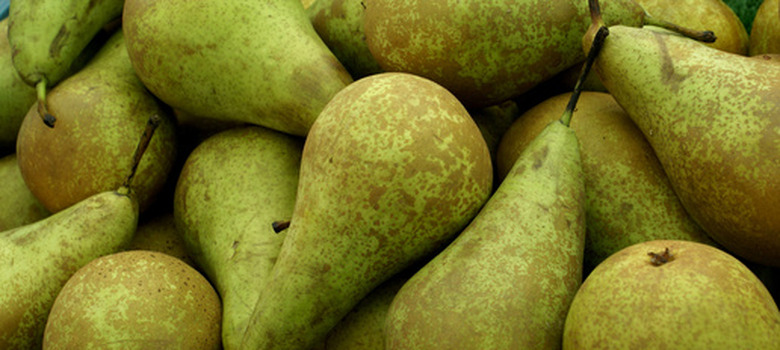What Fruit Trees Grow In Northern Illinois?
A variety of fruit trees grow in Northern Illinois, although some early-blossoming trees risk the chance of being damaged by late spring frosts. Harsh winter conditions in the northern regions of Illinois also affect less hardy fruit trees such as peaches, nectarines and sweet cherries. One type of peach cultivar grows well in the area along with several other types of fruits, giving gardeners plenty of fresh fruit options all summer long.
Peach
Most peach trees (Prunus persica) cannot survive northern Illinois' cold winters, but one cultivar, Reliance peach, thrives in the region even when temperatures fall to 25 degrees below zero in the winter.
The tree reaches up to 20 feet in height. The medium to large fruits ripen in mid-August, featuring red and yellow-skins with bright yellow flesh. The fruit tastes honey-sweet and features a non-clinging pit. Reliance grows in USDA Hardiness Zones 4 to 8. To avoid late spring frosts that might kill the blossoms, plant the trees on high ground or on mounds.
- A variety of fruit trees grow in Northern Illinois, although some early-blossoming trees risk the chance of being damaged by late spring frosts.
Apples
Several varieties of apple trees thrive in the northern region including early versions such as Redfree (Malus 'Redfree') growing up to 15 feet in height and Stark Earliest (Malus domestica) growing up to 12 feet in height. Late-ripening apples such as Braeburn (Malus domestica 'Borkh') also grow well, reaching heights of 20 feet when mature. Gardeners need enough space in the garden for two apple trees since the trees must cross-pollinate to set fruit. Otherwise, little or no fruit appears on the tree. In hardiness Zones 3 to 9, apple trees need to be planted in sunny areas in well-drained soil. To keep the blossoms from getting damaged due to a late spring frost, plant the trees on mounds or high ground.
Pears
Several types of pear trees (Pyrus communis) including Harrow Delight and Bosc grow well in northern gardens. Harrow Delight grows up to 30 feet in height with fruits maturing in mid to late-August. Bosc pear trees also reach 30 feet in height with fruits ripening in early October. Most pear trees require another pear tree with which to cross-pollinate in order to set fruit. Both trees grow in hardiness Zones 5 to 9, and require a sunny location with well-drained soil.
- Several varieties of apple trees thrive in the northern region including early versions such as Redfree (Malus 'Redfree') growing up to 15 feet in height and Stark Earliest (Malus domestica) growing up to 12 feet in height.
- Several types of pear trees (Pyrus communis) including Harrow Delight and Bosc grow well in northern gardens.
Sour Cherries
One of the most popular sour cherry trees (Prunus cerasus), the Montmorency cherry tree, grows well in the region. Other sour cherry tree varieties that thrive in northern Illinois include Meteor (Prunus 'Meteor'), growing up to 10 feet in height and Mesabi (Prunus 'Mesabi'), reaching up to 20 feet in height. These varieties are self-fruitful, meaning they do not need another tree for cross-pollination in order set fruit. The bright red fruits ripen in early summer as long as they receive full sunshine in hardiness Zones 4 to 8.
